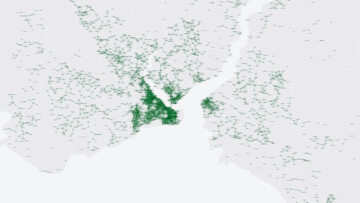Information asymmetry was the primary driver of capital and power in the past century. When one side aggregated more or better information than the other, it gained power. Industrial-era players prospered using this circuitry. Since the emergence of the internet and the web, information has grown increasingly abundant and far more people have gained access to formerly enclosed knowledge. This began to change the power imbalance in every field.
Today, the role of information asymmetry has been replaced by that ofdata asymmetry. Now, those who can aggregate and hedge raw data emerge as the new power players. We all know that our activities are captured by the services we use, our metadata linked to other data to build giant graphs. The graph emerges as one particular mode of understanding this situation. When data points link to one another, the whole generates better intelligence and more value than the sum of its parts. From the social graph to the knowledge graph, the interest graph to the transactions graph, proprietary data networks drive the generation of new power. Graphs are used to make algorithmic predictions and optimizations about our future activities. As our behavior is systematically forecasted, we have gradually entered a “society of control” that monitors, simulates and pre-mediates individual identities in relation to their data trails.
The time has come to confront the data asymmetry perpetuating these power imbalances. The solution lies not in any particular graph, but in an open ecosystem of graphs about the issues that matter to us. This ecosystem would be built, owned and freely used by civil society.




